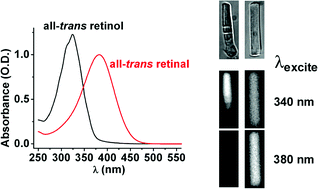Rapid formation of all-transretinol after bleaching in frog and mouse rod photoreceptor outer segments†
Abstract
All-trans

- This article is part of the themed collection: Photosensitive retinal pigments
* Corresponding authors
a
Department of Ophthalmology, Medical University of South Carolina, 167 Ashley Avenue, Charleston, USA
E-mail:
koutalo@musc.edu
Fax: +1 (843)-792-4096
Tel: +1 (843)-792-9180
All-trans

 Please wait while we load your content...
Something went wrong. Try again?
Please wait while we load your content...
Something went wrong. Try again?
C. Chen and Y. Koutalos, Photochem. Photobiol. Sci., 2010, 9, 1475 DOI: 10.1039/C0PP00124D
To request permission to reproduce material from this article, please go to the Copyright Clearance Center request page.
If you are an author contributing to an RSC publication, you do not need to request permission provided correct acknowledgement is given.
If you are the author of this article, you do not need to request permission to reproduce figures and diagrams provided correct acknowledgement is given. If you want to reproduce the whole article in a third-party publication (excluding your thesis/dissertation for which permission is not required) please go to the Copyright Clearance Center request page.
Read more about how to correctly acknowledge RSC content.
 Fetching data from CrossRef.
Fetching data from CrossRef.
This may take some time to load.
Loading related content
